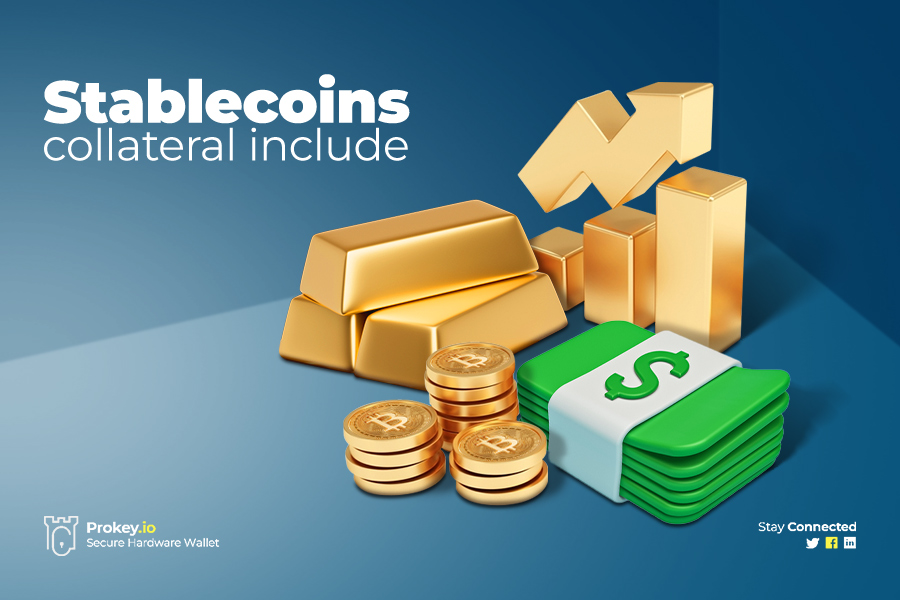Introduction to the basic concepts of stablecoins


One thing about cryptocurrencies is that they are highly volatile, meaning their price fluctuates frequently. The volatility of cryptocurrency can either be an advantage or a disadvantage to traders and investors. Some investors aim to capitalize on the volatility of cryptocurrencies to make extra money. On the other hand, some investors simply buy cryptocurrencies as a form of digital cash, meaning cryptocurrency’s volatility will pose a challenge. Hence, the inception of stablecoins to mitigate the crises that accompanies volatility.
Stablecoins is a sub-category of cryptocurrency aimed at providing a more constant value. It also bridges the gap between fiat currencies and cryptocurrencies. But bear in mind that if you are going to use stablecoins, you must understand its concept. Note that all stablecoins are not created equally!
So, any stablecoins you decide to use should serve the function you need them for. This article will guide you on what you need to know about these highly stable digital assets. And by the end of this article, you have a basic idea of stablecoins and how to store them safely.
What are stablecoins?
Stablecoins are digital or virtual currencies that derive market value from external commodities or financial instruments. Their mode of operation is similar to that of blockchain technology. But unlike other cryptocurrencies, they are essentially built to provide an alternative to the high volatility of cryptocurrencies.
Stablecoins are built differently, as their value does not change with the rise or fall in demand and supply of their token. Instead, the value is pegged to more stable assets like the US dollars, amongst other commodities. Hence, it is almost impossible to record a significant gain or a huge loss when you buy stablecoins like Tether, which is pegged to the US dollar.
Common collaterals of stablecoins
The value of stablecoins is pegged to that of a more stable or reserve asset such as national currencies. A reserve asset is a financial asset held by central banks and denominated in foreign currencies to balance payments. Knowing the type of assets a stablecoins is tied to is critical to determining its risk level.
Some of the common types of stablecoin collateral include:
-
Fiat currency
Most stablecoins are pegged to fiat currencies, like the US dollar, Turkish lira, etc. This type of coin is referred to as fiat-collateralized stablecoins. Stablecoins pegged to fiat currency are more dependable since the government backs them. Their value ratio is ascertained. For example, Tether has a 1:1 peg with the US dollar. In other words, 1 USDT is worth $1. Other stablecoins pegged to other fiat currencies will have their value ratio.
-
Precious metal
Stablecoins also peg their value to precious metals like gold, silver, and several others. However, a third party must hold the precious metal in reserve like other fiat currency. When the value of stablecoins is tied to a precious metal like gold, the baseline value of the coin will be equal to a fixed amount of gold. For example, one token can have an equivalent value to 1 gram of gold.
-
Cryptocurrencies
Some stablecoins are backed by other crypto-assets and are known as crypto-collateralized stablecoins. The challenge with this type of pegging is that the cryptocurrency used to back the stablecoin can be volatile. For example, a stablecoin token worth $1 can be backed by a cryptocurrency worth $2. If the crypto asset value drops from $2, the stablecoin might also drop below $1. Hence, it is a good idea to monitor the performance of the cryptocurrency that backs these stable assets.
-
Algorithms
Some stablecoins are non-collateralized, meaning their value is not pegged by any reserve asset. However, their stability is derived from an algorithmic working principle such as a central bank. For example, a stablecoin token could base its value on the consensus mechanism. So the consensus mechanism will determine whether it should increase or decrease the supply of the token to balance its value.
Why should you use stablecoins?
Most people buying cryptocurrencies do so, hoping that they will increase in value. In other words, volatility is the reason many people are interested in cryptocurrency in the first place. Since stablecoins are not as volatile, many people wonder why they should consider using them.
Below are the reasons why you should use stablecoins:
-
Minimize volatility
One of the main advantages of stablecoins is that they have a more stable value than other cryptocurrencies. In other words, if you are looking for a way to use digital assets without losing a huge chunk of your money overnight, then stablecoins are ideal for you. Essentially, you can do everything you do with other cryptocurrencies with stablecoins.
-
Lower transfer fees
Compared to fiat currencies, cryptocurrencies, in general, allow you to send tokens with lower transaction fees. The amount you get charged for transferring crypto assets at the end of the day depends on the crypto token you are using and several factors.
Stablecoins, for example, charge the lowest in terms of transfer fees. Most times, how much you are charged for transferring funds may seem insignificant irrespective of whether you’re sending internationally or locally.
-
Facilitate international payment
Paying for things abroad can be challenging. The challenge could be the time it takes to deliver or the transfer cost for most people. However, using stablecoins to send funds abroad is not only easy, but it is cheaper, faster, and secure. Stablecoins are recognized internationally because of their relatively more stable nature.
-
Financial institution friendly
Stablecoins are also friendly with financial institutions. So, unlike other crypto-related activities, you wouldn’t run into any sanctions from financial institutions for trading with the digital coin. Hence, you can buy and liquidate your stablecoins asset with no trouble.
Types of stablecoins tokens
If you are convinced about using stablecoins, you should take your time to know the right one to use. There are different types of stablecoins, and each has its distinct advantage over the other.
Below are five of the most popular stablecoin tokens by market cap:
-
Tether
Tether or USDT is the third-largest cryptocurrency after Bitcoin and Ethereum, and it is the largest stablecoin by market cap. Tether was launched in 2014, and its market cap is over $74 billion. It is hosted on the Bitcoin and Ethereum Blockchain, amongst others.
Tether is pegged to the US dollar with a value ratio of 1-to-1. It also offers tokens pegged to gold, offshore Chinese yuan, and euro. Tether is also known for its top-notch security and smooth incorporation with crypto to fiat platforms.
-
USD coin
USD coin or USDC is another popular stablecoin with a market cap of over $54 billion. It is built on the Ethereum Blockchain and was launched in 2018. Like most collateralized stablecoins, USDC is pegged to the US dollar with a value ratio of 1:1. That means, ideally, 1 USDC is worth $1.
-
Binance USD
Binance or BUD is a well-known stablecoin issued on the Ethereum Blockchain. With a market cap of over $18 billion, BUSD is ranked as the third most popular Stablecoins.
BUSD is issued by Binance in partnership with Paxos and pegged to the US dollar at a value ratio of 1-to-1. Paxos also created the gold-backed stablecoin PAX gold (PAXG).
-
Dai
Dai, launched in 2017, is another well-known stablecoin based on the Ethereum Blockchain and has a market cap of over $6 billion. Dai is tied to the US dollar, but it is not only able to maintain its value from being pegged to the US dollar. Instead, Dai maintains its value by using collateralized debt denominated in ether (ETH).
-
TrueUSD
TrueUSD or TUSD is a collateralized stablecoin running on the Ethereum Blockchain. Launched in early 2018, TUSD is the first crypto asset designed by TrustToken. TUSD is pegged with the US dollar with a value ratio of 1-to-1 and has a market cap of over $1 billion.
How to store your stablecoins safely?
While stablecoins are pretty different from regular cryptocurrencies, they are easy to store. When storing your stablecoins, it is essential that you use a secure wallet. There are several wallets you can choose to store your digital assets, but Prokey is the best.
Prokey is an affordable hardware wallet solution you can use to store several stablecoins like Tether, USD Coin, Binance USD, and many more. As a hardware wallet, it protects your digital assets from online hackers. Note that Prokey can be used to store several other digital assets, making it an all-in-one solution for securely storing digital assets.
Conclusion
To sum things up, people are interested in stablecoins because they are built to overcome the volatility of the crypto industry. Although stablecoins may not be seen as an ideal coin for trading as their price will not soar in value, they are better used as a form of digital cash.
Despite being stable, stablecoins are still decentralized and not under the rules and regulations of a centralized body. However, if your aim for entering the crypto industry is to make money, there are several ways to make money with stablecoins, but not by capitalizing on volatility.
10 Tips for Safe and Correct Use of Hardware Wallets



